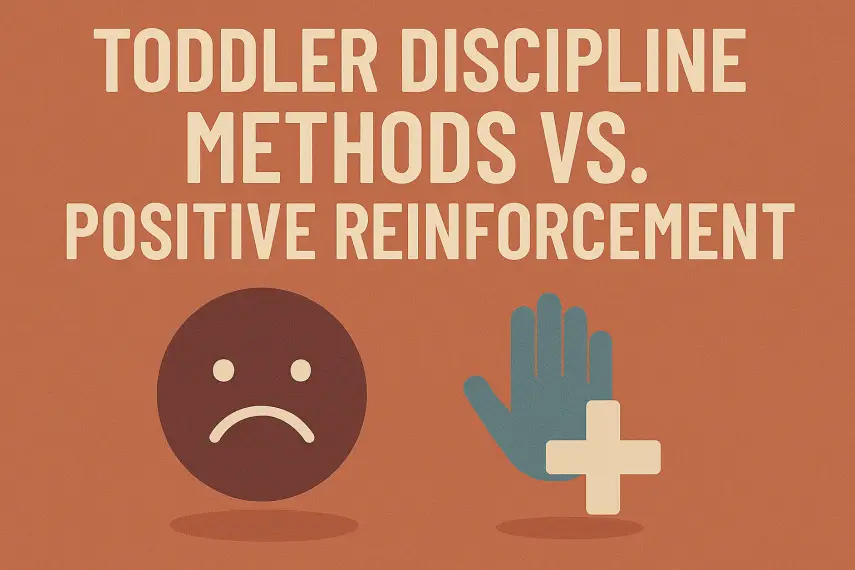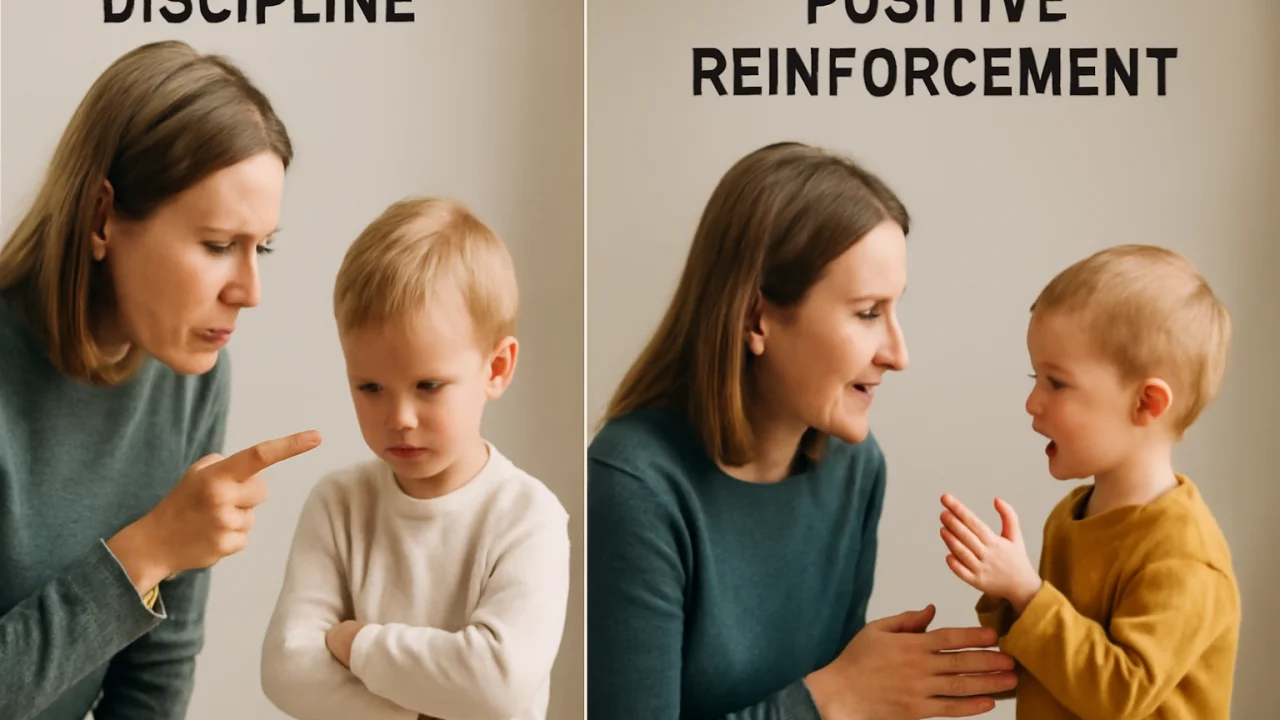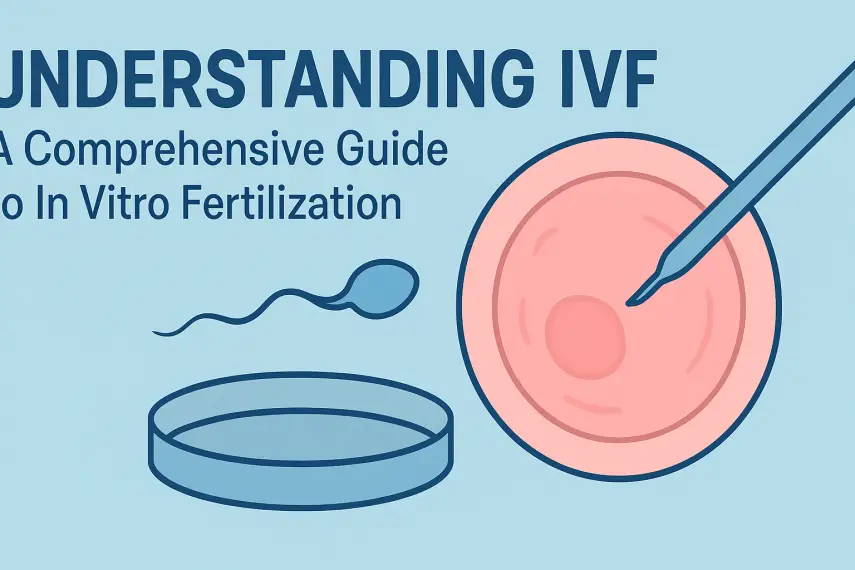
Toddler Discipline Methods vs Positive Reinforcement
📑 Contents
Disciplining toddlers is a common challenge for parents and caregivers, with many wondering about the best approach to guide young children’s behavior. The debate between traditional toddler discipline methods vs positive reinforcement is ongoing, as parents seek effective, respectful ways to foster good behavior and support healthy development. Understanding the differences, benefits, and potential drawbacks of each approach can help you make informed decisions tailored to your child’s needs.
Understanding Toddler Discipline Methods

Discipline methods for toddlers encompass a range of techniques designed to teach self-control, respect, and appropriate behavior. Traditionally, these methods can include time-outs, loss of privileges, verbal warnings, and consequences for misbehavior. The goal is not punishment, but rather to help toddlers learn about boundaries and expectations.
Common Traditional Discipline Methods
- Time-out: Removing the child from a problematic situation for a short period.
- Loss of Privileges: Taking away a favorite activity or item temporarily.
- Natural Consequences: Allowing the child to experience the result of their actions (when safe).
- Verbal Correction: Calmly explaining what was wrong with the behavior.
| Method | Description | Common Uses |
|---|---|---|
| Time-out | Short separation from activity | Aggression, tantrums |
| Loss of Privileges | Removal of a valued item/activity | Repeated misbehavior |
| Natural Consequences | Experiencing outcomes of actions | Refusal to wear coat in cold |
| Verbal Correction | Explaining inappropriate behavior | Lesser misbehavior |
What Is Positive Reinforcement?

Positive reinforcement is a parenting strategy that focuses on encouraging desirable behavior by offering praise, attention, or rewards. Rather than focusing on what a child does wrong, positive reinforcement highlights and strengthens what they do right. This method is widely supported by child development research as a way to build self-esteem and internal motivation.
Examples of Positive Reinforcement
- Verbal Praise: Saying "Great job cleaning up your toys!"
- Physical Affection: Hugs, high-fives, or smiles.
- Reward Systems: Stickers, charts, or small treats for positive behavior.
- Special Privileges: Extra playtime or choosing a family activity.
| Type | Example | Purpose |
|---|---|---|
| Verbal Praise | "Thank you for sharing!" | Encourage sharing |
| Physical Reward | Sticker for good listening | Reinforce listening skills |
| Special Activity | Choosing dessert after cooperation | Promote cooperation |
Toddler Discipline Methods vs Positive Reinforcement: Key Differences

While both discipline and positive reinforcement aim to shape behavior, they differ in approach and focus. Discipline often addresses unwanted behavior after it occurs, whereas positive reinforcement proactively encourages good behavior. Both methods can be effective, especially when combined thoughtfully.
| Aspect | Traditional Discipline | Positive Reinforcement |
|---|---|---|
| Focus | Correcting misbehavior | Encouraging desirable behavior |
| Timing | After misbehavior | During/after good behavior |
| Emotional Impact | Potential for negative feelings | Promotes positive feelings |
| Effectiveness | Varies by child/situation | Supported by research for long-term change |
Benefits and Drawbacks

Benefits of Traditional Discipline Methods
- Clear boundaries and structure.
- Immediate response to problem behavior.
- Teaches cause and effect.
Drawbacks of Traditional Discipline Methods
- May cause fear or resentment if overused.
- Sometimes focuses more on punishment than learning.
- Can damage parent-child relationship if not used carefully.
Benefits of Positive Reinforcement
- Builds self-esteem and confidence.
- Strengthens parent-child bond.
- Encourages internal motivation for good behavior.
Drawbacks of Positive Reinforcement
- If overused, children may expect rewards for all behaviors.
- Requires consistency and attention from adults.
- May be less effective for serious or dangerous behaviors.
Combining Both Approaches

Many parenting experts recommend a balanced approach, using both discipline and positive reinforcement as needed. The key is consistency, clear communication, and a focus on teaching rather than punishing.
- Use positive reinforcement for everyday behaviors and learning new skills.
- Reserve discipline for repeated, dangerous, or disruptive behaviors.
- Always explain the reasons behind rules and consequences.
- Remain calm and empathetic during discipline moments.
Frequently Asked Questions (FAQ)

- What is the main difference between discipline and positive reinforcement?
Discipline focuses on correcting misbehavior, while positive reinforcement encourages repeating desirable behaviors by rewarding them.
- Is positive reinforcement more effective for toddlers?
Research suggests positive reinforcement is generally effective, especially for encouraging long-term behavior change, but effectiveness can vary by child.
- Can discipline and positive reinforcement be used together?
Yes, combining both approaches can be effective when used appropriately and consistently.
- Are time-outs harmful for toddlers?
When used calmly and briefly, time-outs are not shown to be harmful, but should not be used excessively or as the sole method of discipline.
- What kinds of rewards work best for positive reinforcement?
Praise, attention, and simple rewards like stickers or privileges are effective. The best rewards are those that are meaningful to the child.
- What if positive reinforcement does not work?
If positive reinforcement alone is ineffective, review consistency and appropriateness, and consider integrating clear consequences for misbehavior.
- How can I set effective boundaries with my toddler?
Use clear, simple rules, enforce them consistently, and explain the reasons behind them to your child.
- What should I avoid when disciplining a toddler?
Avoid harsh punishment, yelling, or physical discipline. Focus on teaching and guiding rather than punishing.
Conclusion

Choosing between toddler discipline methods vs positive reinforcement is not an either/or decision for most families. Both have a place in effective parenting, and the most successful strategies are those that are consistent, age-appropriate, and focused on teaching rather than just correcting. By understanding and thoughtfully applying these methods, parents can guide their toddlers toward positive behavior and healthy development.
Looking for more expert tips on child development and parenting? Visit isayinfo.com for up-to-date advice and resources.











